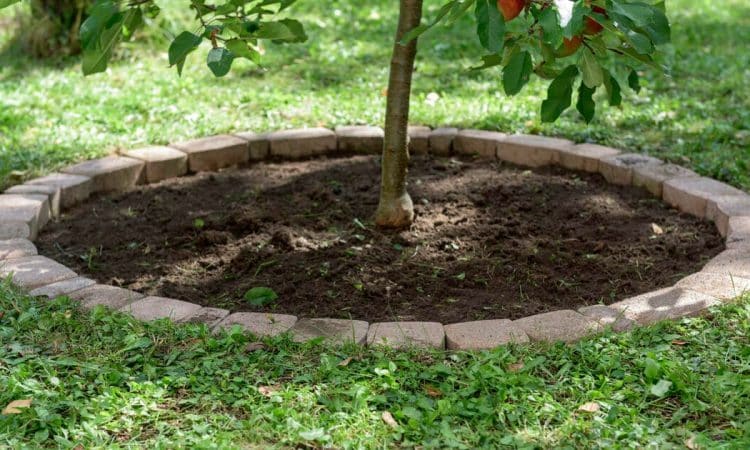
Trees and shrubs of all kinds are planted young so that they become the supporting elements of the garden. No matter how tall they are when planted, the tree disc promotes growth.
Woody plants are the longest-lived garden plants and their ecological value in terms of protection against extreme climatic conditions and benefits for wildlife is undeniable. They also determine the layout of the garden. It is imperative to avoid mistakes resulting from insufficient care, especially when planting and caring for them in the first few years, as they are very difficult to correct.
The solution is to create a tree disc . This refers to an area free of vegetation around the new tree. Simply leaving young trees to their fate is a big mistake, because burning mainly herbaceous plants such as grass, weeds or even sprawling ornamental perennials takes away their water and nutrients. If the tree is still young, other plants can so rob it of what it needs that it starves and grows poorly or even dies.
How is a tree disc created?
It’s very simple: when a tree is planted, the planting hole is dug at least twice as wide as the root ball or pot of the new tree. Roughly speaking, the cut for an apple tree is half a metre in diameter – ten extra centimetres won’t hurt either. Very large trees, such as tall indoor trees or solitary magnolias, can be covered with a tree disc up to one metre in diameter. For example, if you are planting fruit trees or bare-root roses, the tree disc will be twice as large in diameter as a mature plant with a trunk or trunk diameter that will be needed in a few years.
If you have already planted trees without a tree disc, do so as soon as possible and completely cut back the vegetation that grows directly on the tree or shrub. You can also enclose the tree disc around its circumference with paving stones, for example, so that you don’t have to re-contour it with a shovel every year.
Keep the tree window open at all times
Once the tree disc has been established, it should always be protected from new shoots. To save yourself the trouble of weeding, simply make it a rule to quickly cultivate the tree disc with a hand cultivator about every 14 days. Of course, it can also be mulched if the trees tolerate it. Tilling immediately after rain or watering helps to ensure that water does not leave the ground in the same way and can be fully utilised by the trees. It goes without saying that fertilisation (nutrients are usually applied once or twice a year) is easier and more effective if the fertiliser is applied directly into the soil of the tree disc. If the tree or shrub has grown back a few years, A. The tree cut is no longer necessary for survival, but is still extremely useful for the tree to thrive.

